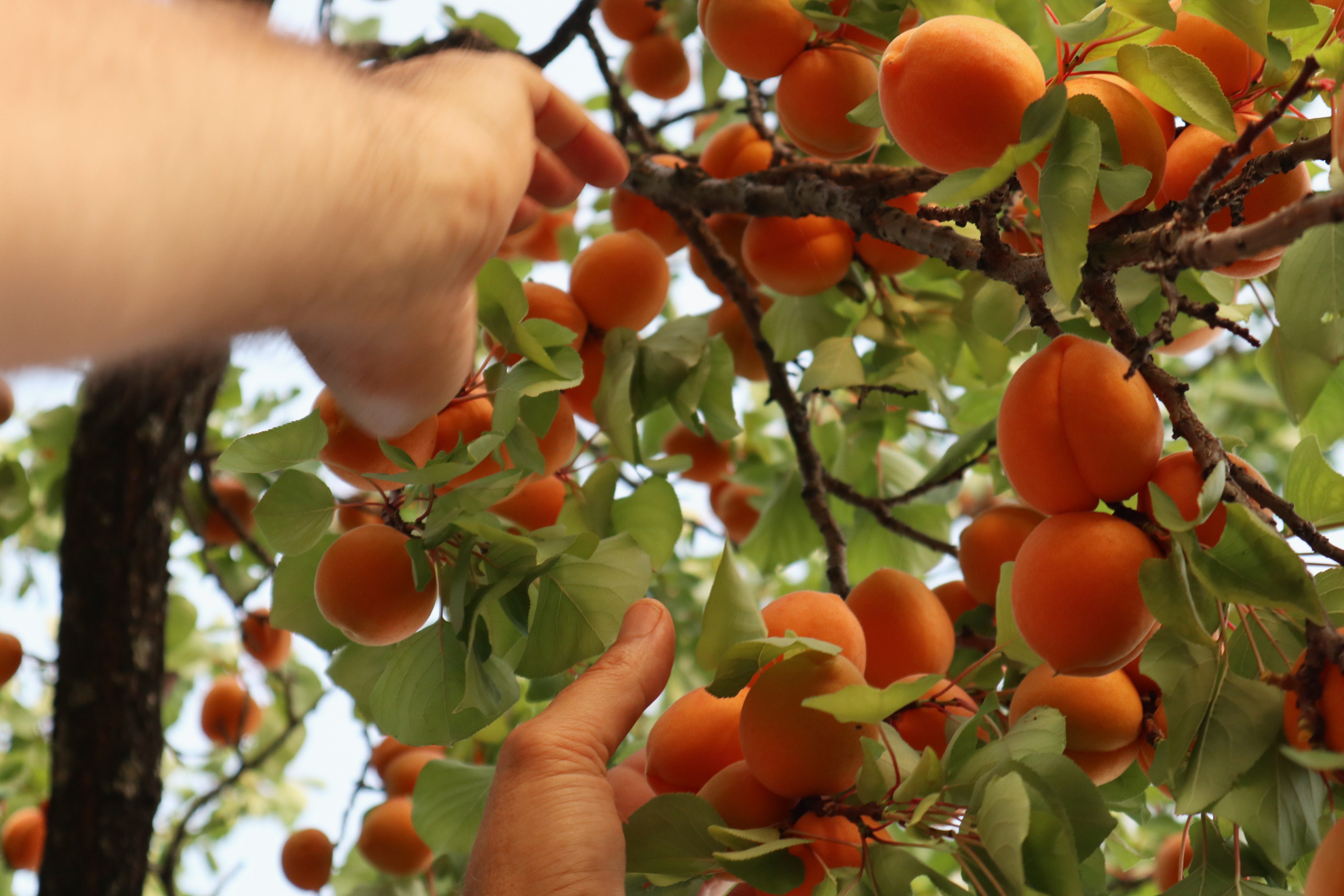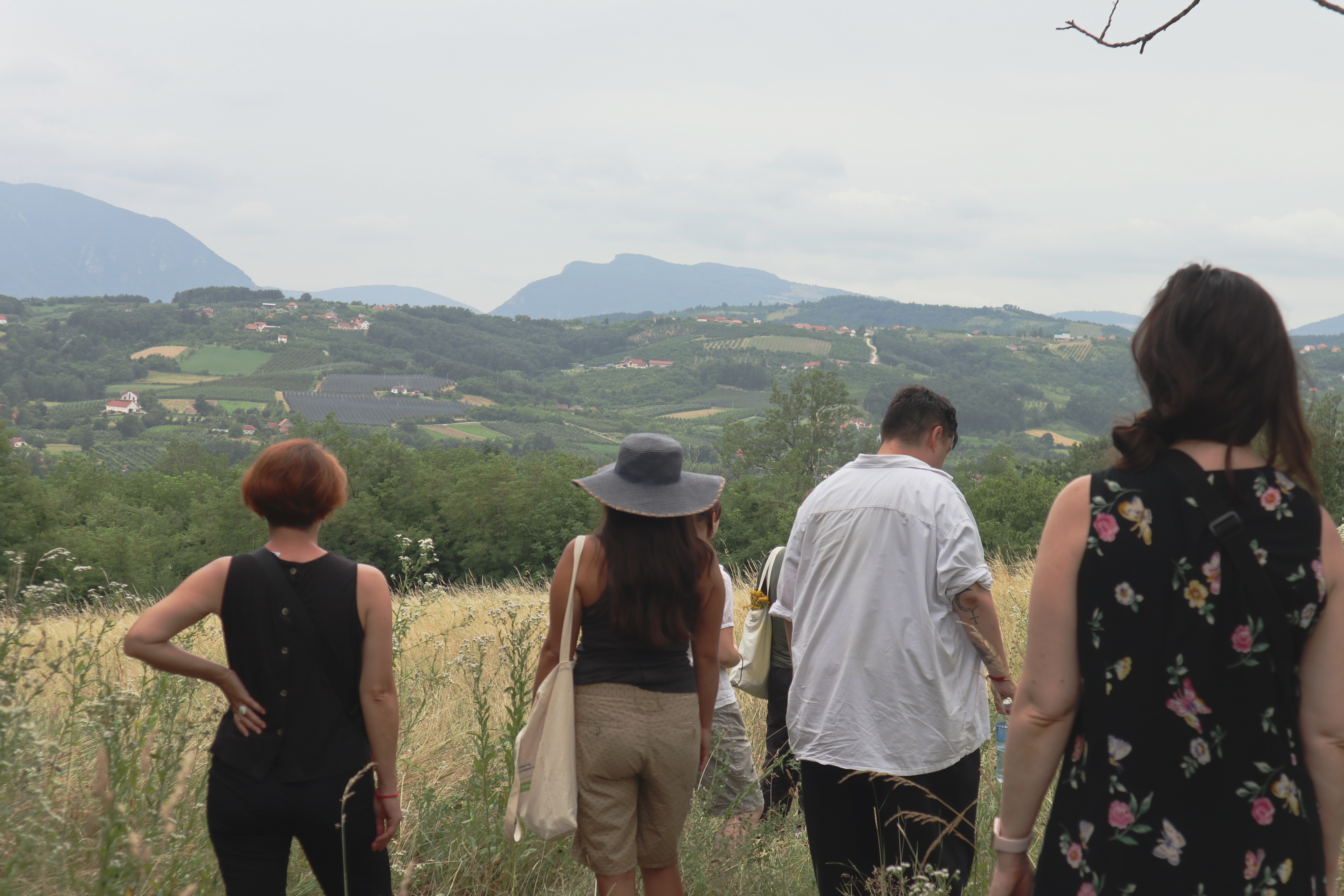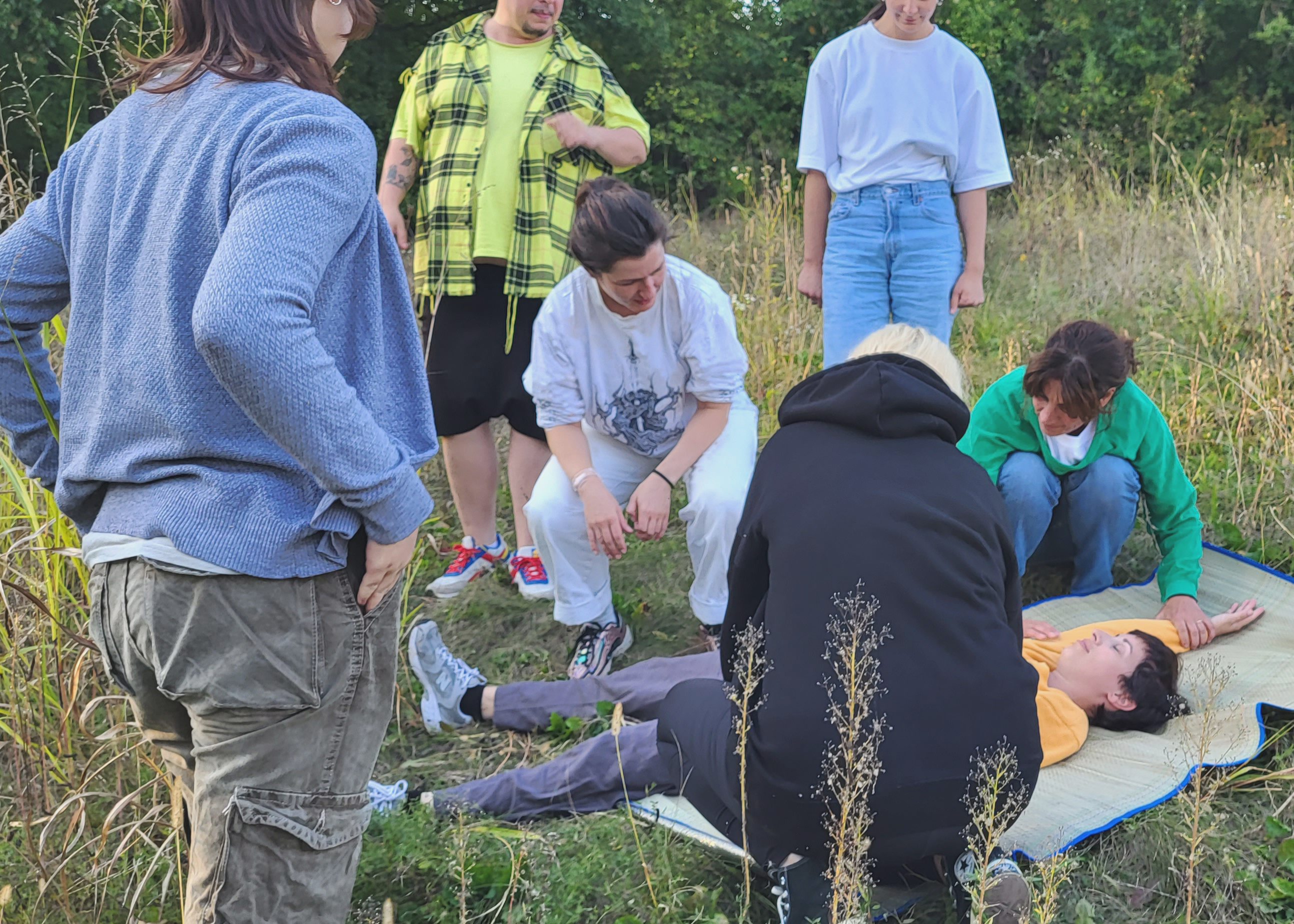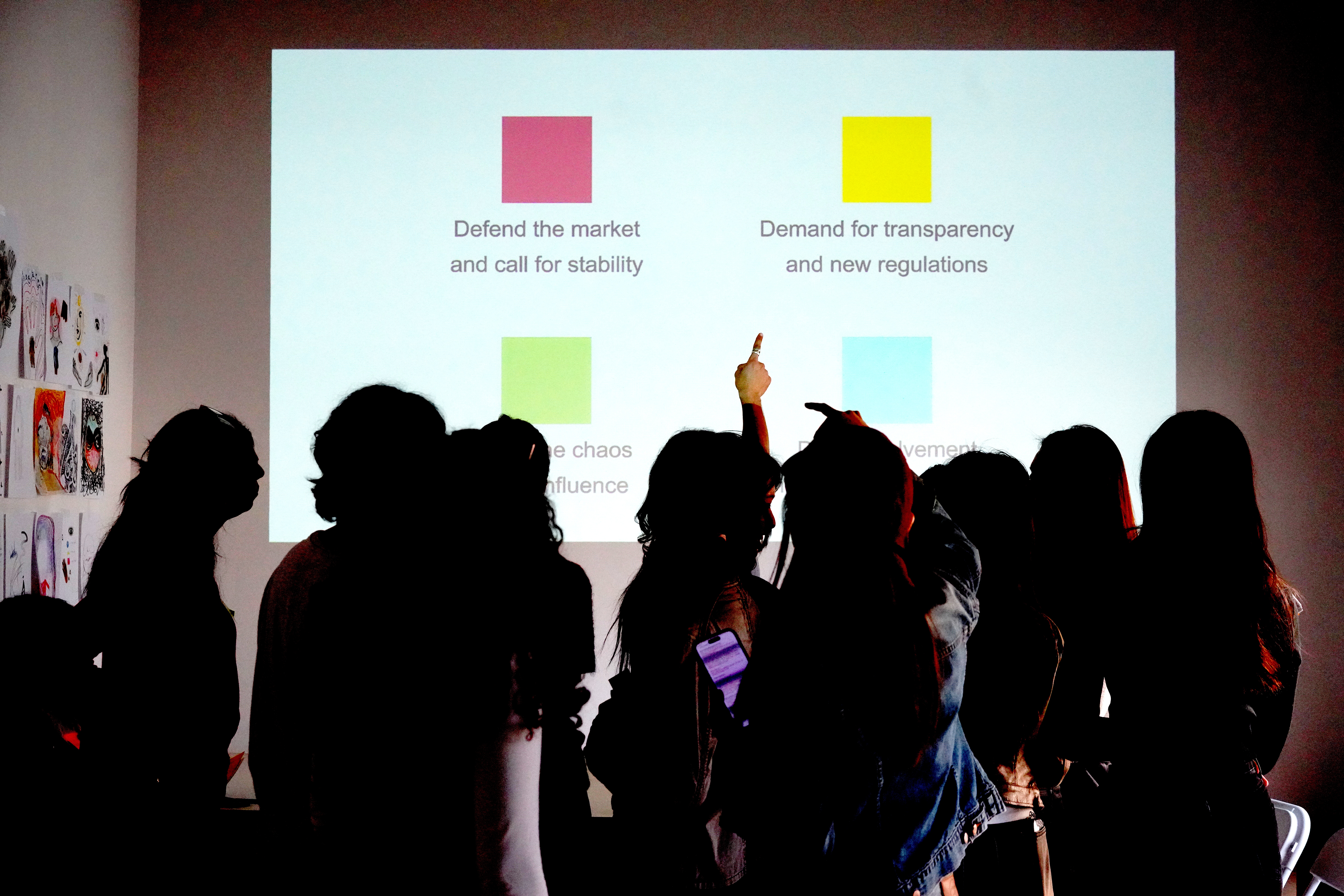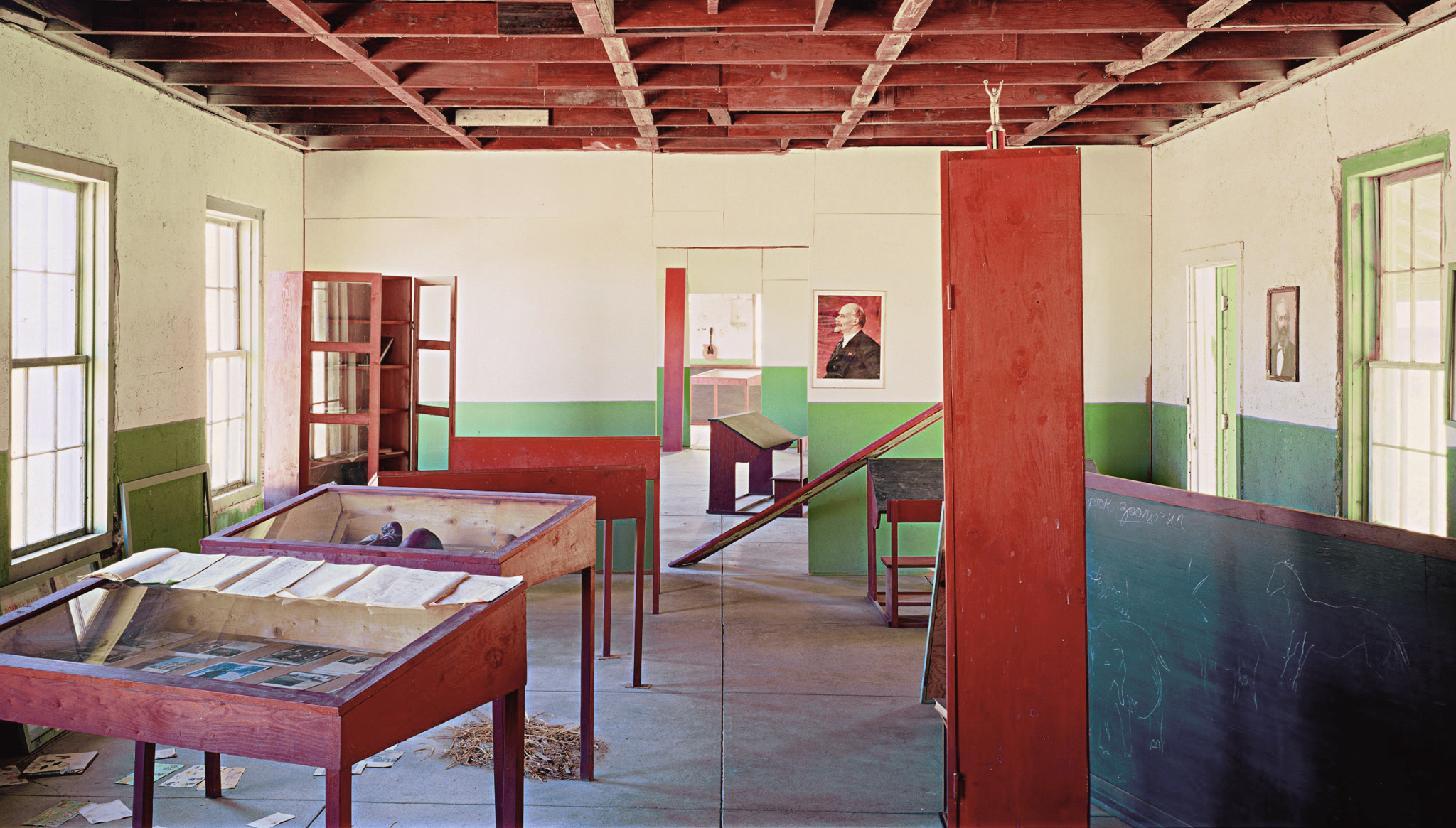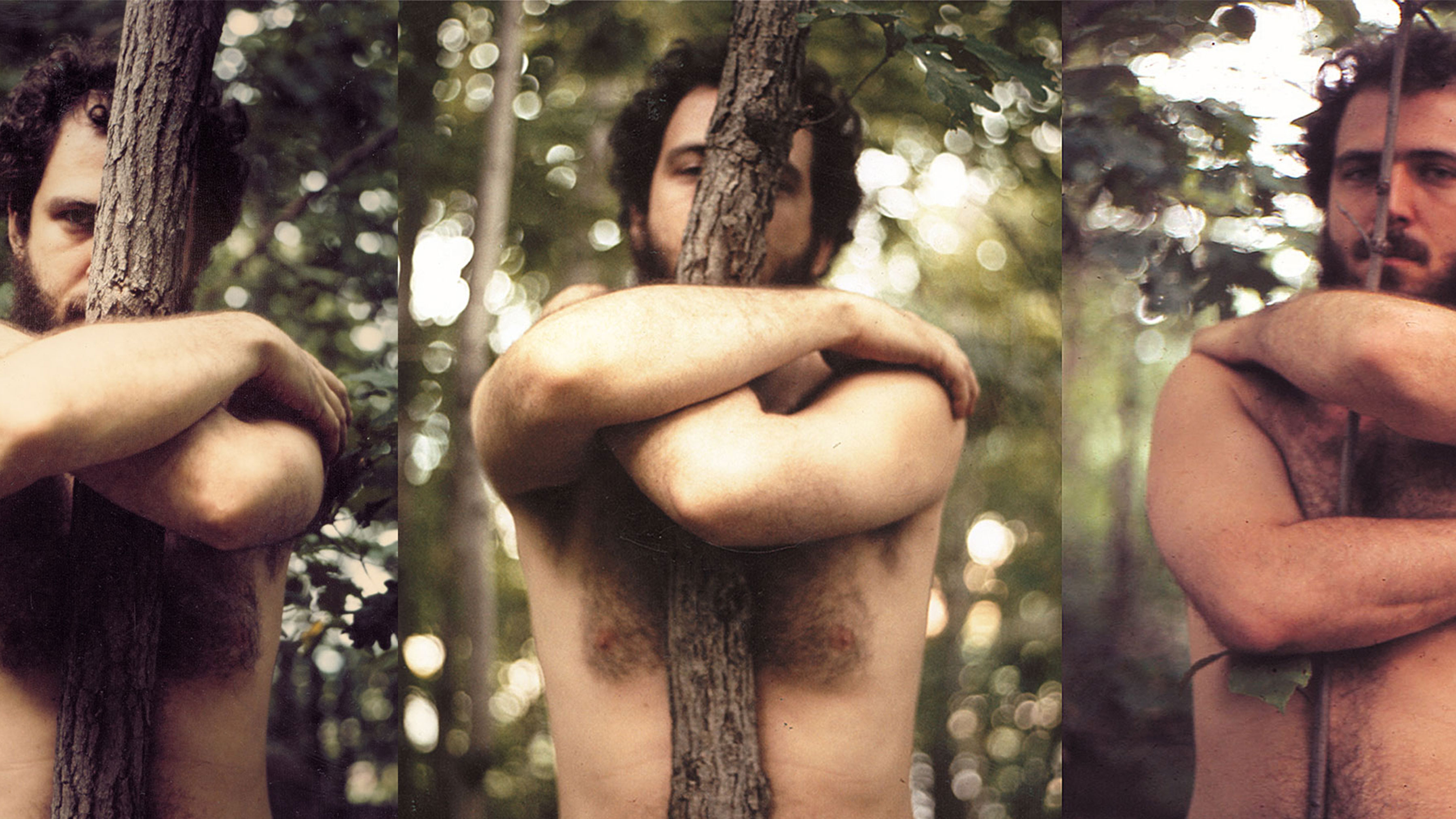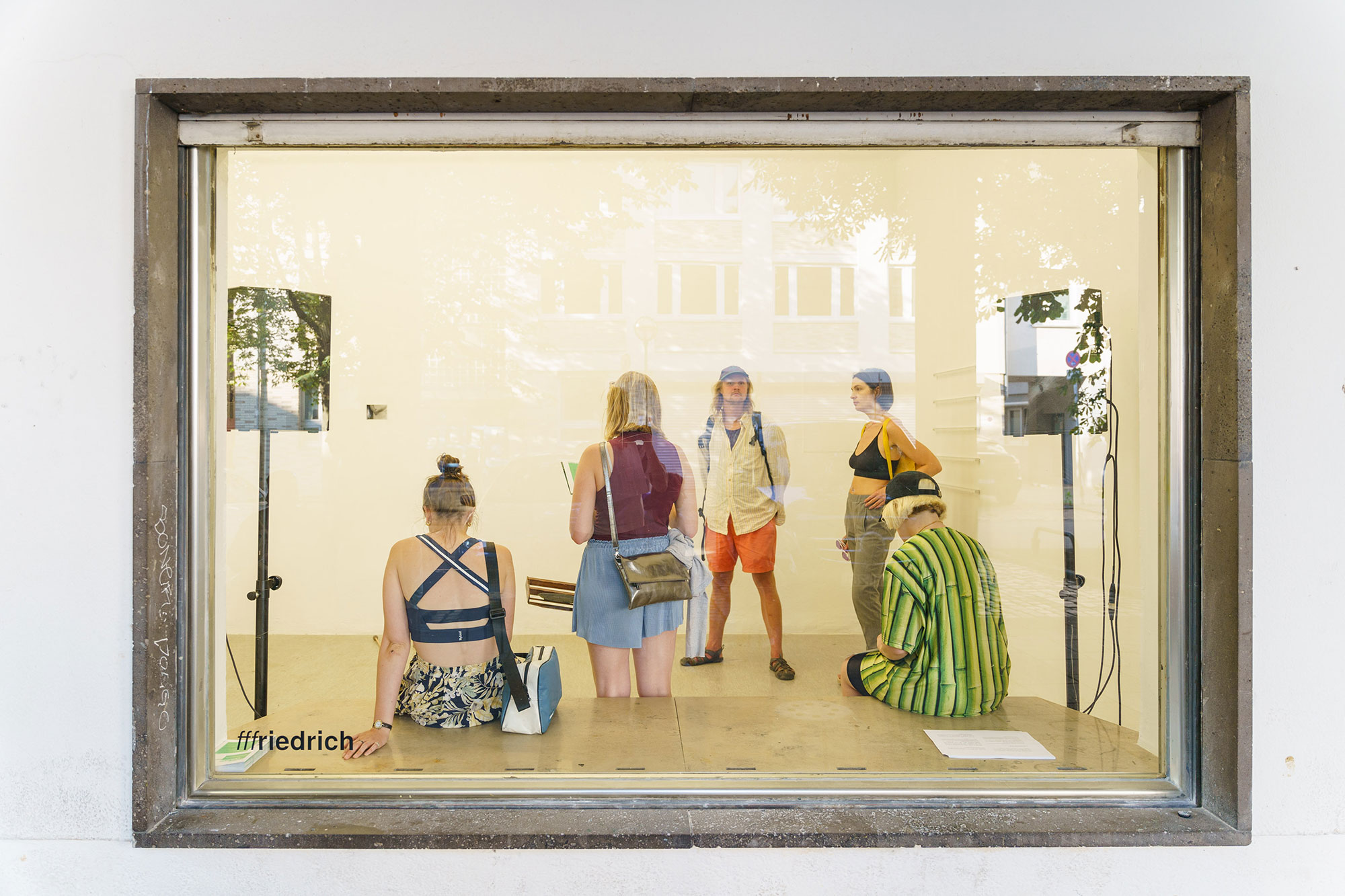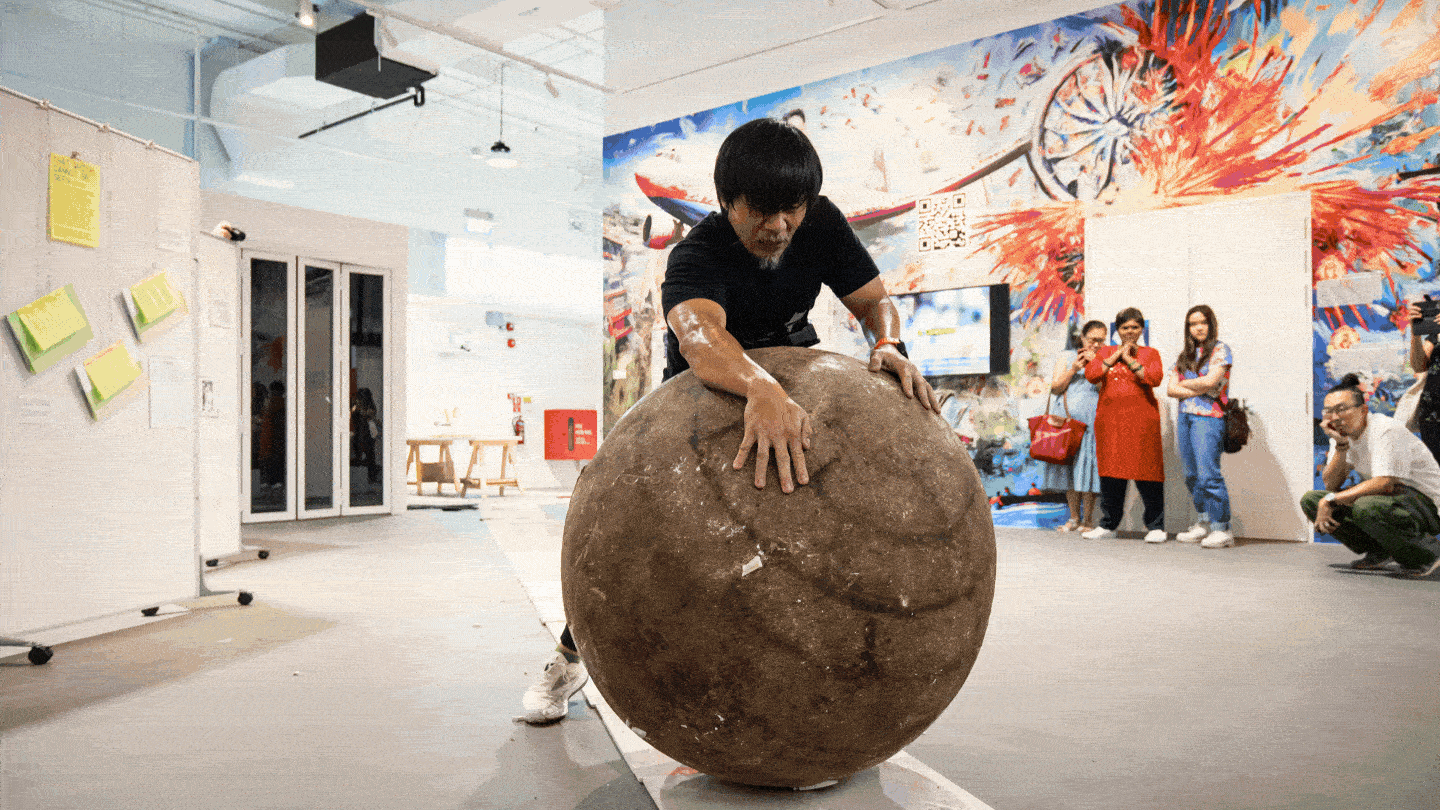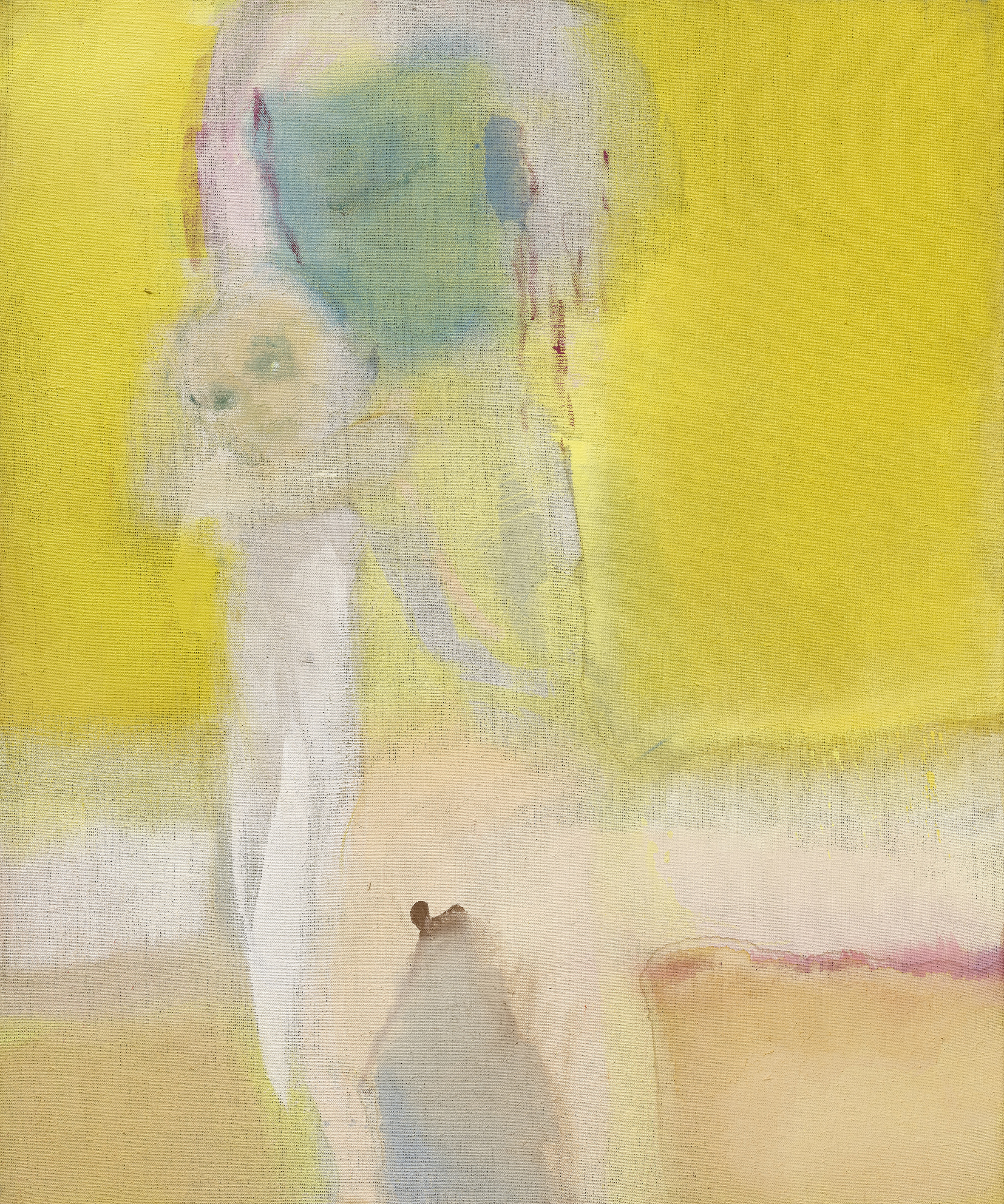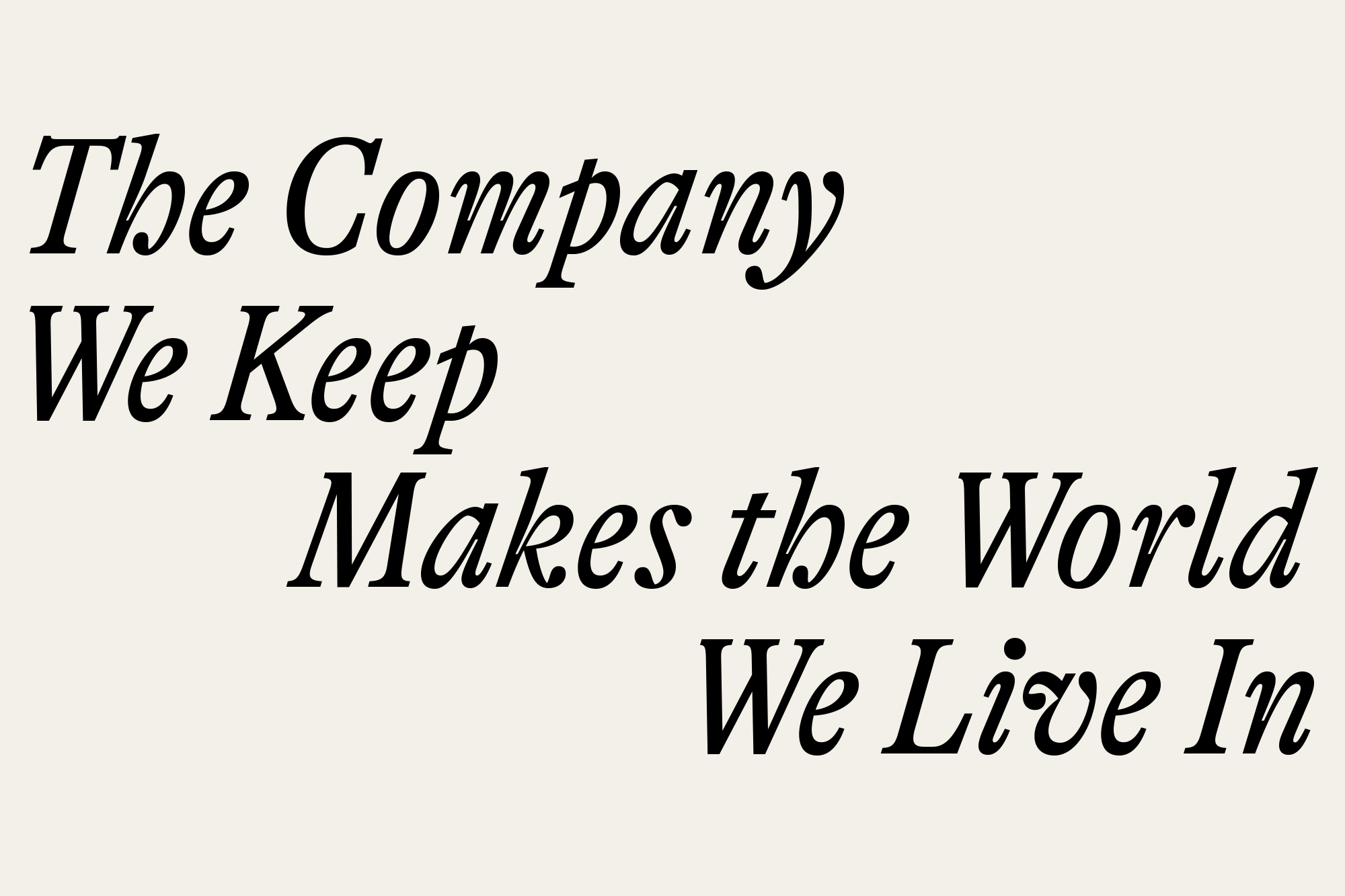To embark from one of the questions that guides the Belgrade-based educational platform What Could/Should Curating Do (WCSCD): How might an art institution “become the custodian of the land?” Many art centers that station themselves in non-urban areas have succumbed to a romantic idea of rural life, constructing monolithic museum-tombs to market modernity’s myth of the pastoral. By contrast, WCSCD, which was founded in 2018 by the Serbian writer and curator Biljana Ćirić, embeds itself within the sociocultural, ecological, and economic histories of its chosen locale, striving to embody a new kind of social organism altogether. Its recent educational program, a twelve-month course of study for curators and other cultural workers, set out to model the latter, concentrating its efforts on envisioning a new kind of art center that could effect authentic, sustainable custodianship of a region and reinvigorate a splintered community.
Commencing in September 2023, the program met in Belgrade for its first month, then relocated to the remote Serbian village of Gornja Gorevnica for ten days of intense study in October. After this assembly, the program met, conducted research, and studied online together for the next six months, convening once more at the village in May of this year. On June 23, participants shared the results of their research and collective study at a public event in Gornja Gorevnica. As a writer interested in divergent modes of cultural production and togetherness, I visited the program during each of these in-person convenings.
In the six years since its founding, WCSCD has focused on thinking about ethical, economic, and ecological sustainability. Its 2024 education program aimed to put its ideas into practice, building an example of how a small arts organization could operate at the supposed margins of contemporary cultural discourse. The program strives to expand established notions of curating by advocating for relational approaches and emphasizing the field’s potential to dismantle colonial and capitalist structures of power. This year’s participants worked with a range of mentors, including curators, artists, collectives, and—perhaps most importantly—residents of Gornja Gorevnica.
In addition to conducting social and historical research, students devoted their time in the village to walking, weaving, cooking, and crafting. These practices reflect the program’s “ecosophical” philosophy, adopted from Félix Guattari’s concept of harmony between the “three ecological registers” of the “environment, social relations, and human subjectivity.”[footnote Félix Guattari, The Three Ecologies, trans. Ian Pindar and Paul Sutton (Athlone Press, 2000), 28.] Arguing that environmentalist and social movements alike have long upheld a faulty dualism between human society and the natural world, he instead asserts their complex interconnections. “This new ecosophical logic,” Guattari explains, “resembles the manner in which an artist may be led to alter his work after the intrusion of some accidental detail, an event-incident that suddenly makes his initial project bifurcate, making it drift [dériver] far from its previous path, however certain it had once appeared to be.”[footnote Guattari, The Three Ecologies, 52.]
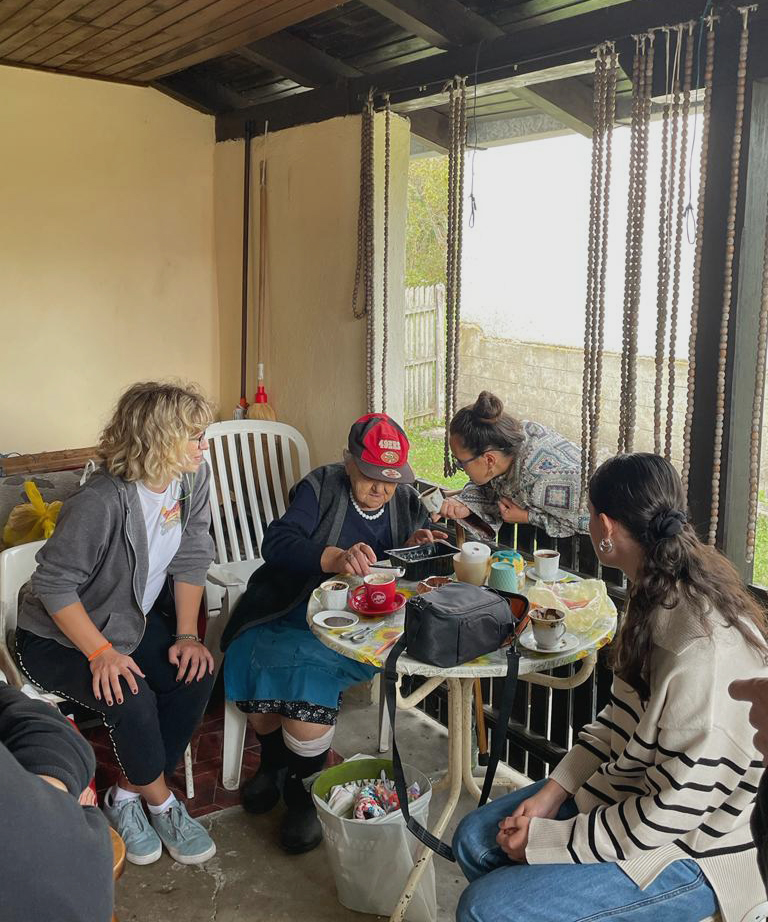
Participants in the 2024 WCSCD education program receiving an embroidery lesson from Auntie Razuemnka, the oldest woman in Gornja Gorevnica. Courtesy of WCSCD.
Gornja Gorevnica has a long, multilayered sociocultural history. The earliest known record of the village appears on an Ottoman Empire tax registry from 1528, listing seventy inhabitants across fifty-four smallholding households. With twenty-five square kilometers of farmland and no common social center, it can now be described as a “broken village.”[footnote A term used by the Serbian writer Ivan Glišić to describe disparate settlements or porous villages which are fragmentary in form and span a large rural area.] For centuries, social connections were made through the sharing of produce and labor, but the spread of industrialization shifted the village away from its agrarian ways of life. In the early twentieth century, magnesium ore was discovered in the neighboring hills, leading to the opening of a mine in 1927. After World War II, further mechanization led to the extraction of the village’s workforce itself, who were newly used as fodder for urban industries like construction, engineering, and more general factory fabrication.
This transition from communal, rural labor to urban production has whittled away the village’s population and curtailed its sociality. Local people increasingly report feelings of loneliness and social dissociation, which they attribute to the economic and ecological pressures of modern life. Most of the village’s laborers live two lives, tending to their lands in any spare time they have around their full-time work hours in the city. Population statistics allude to the effect of this urban squeeze on village life; WCSCD reports that prior to World War II, three quarters of Serbia’s population was “engaged in agriculture”; nowadays, only one sixth is. Consequently, Gornja Gorevnica’s population has steadily decreased, and the closure of the village’s magnesium mine in 2000 only accelerated this exodus.[footnote “Open call: What Could Should Curating Do educational program 2023/2024,” What Could/Should Curating Do?, accessed June 2023, →.] In recent years, select members of the community have initiated several development projects in Gornja Gorevnica, aspiring to halt this “broken” village’s decline by creating physical spaces for social connection, such as a house of culture and a football field near the village center. Propelled by the enthusiasm of a few individuals and/or political monies, these projects are never not precarious; the house of culture currently stands all but abandoned, with its future made uncertain by shifts in the municipality’s political affiliations. Indeed, based on development economics, these structures for togetherness lack the sustainability once found in the village’s culture of reciprocity.
With this context in mind, participants in WCSCD’s program sought to conceive of a new kind of arts center, rooted in sustainability and tailored to the socioecological particularities of Gornja Gorevnica. This imagining began with historical research in which participants undertook a collective mapping of communal cultural practices from across the Balkan region. Concentrating on artists who work to establish new creative communities in rural contexts—the OHO Group in Slovenia and the Family of Clear Streams in Serbia, for example—participants examined the various motivations behind each, from seeking to decenter the human position within hierarchies of being, to exploring how ecological thinking could be applied to creativity and anti-capitalist exchange systems. More than a bookish exercise, this study consisted of site visits and interviews with key artists, with the objective of gaining deeper knowledge of each artistic process and its output.
Over the course of the program, this research evolved into a text-based glossary. Subdivided into five sections—Art, Economy, Politics, Gender Issues, and Spirituality—the glossary sketches a holistic landscape upon which the studied practices have grown, acquainting its readers with these communal methodologies and providing a grounding for their potential applications elsewhere. To decenter an author-to-reader hierarchy, participants organized several public workshops in Belgrade and Novi Sad called “glossary l(a)unches.” At each of these open events, the glossary and its key terms were introduced to the public and attendants were invited to respond in any way they wished. The live traces of this active thinking were recorded on several paper tablecloths, and these notes further informed the WCSCD’s own thoughts about how an institution could ethically operate as a custodian.
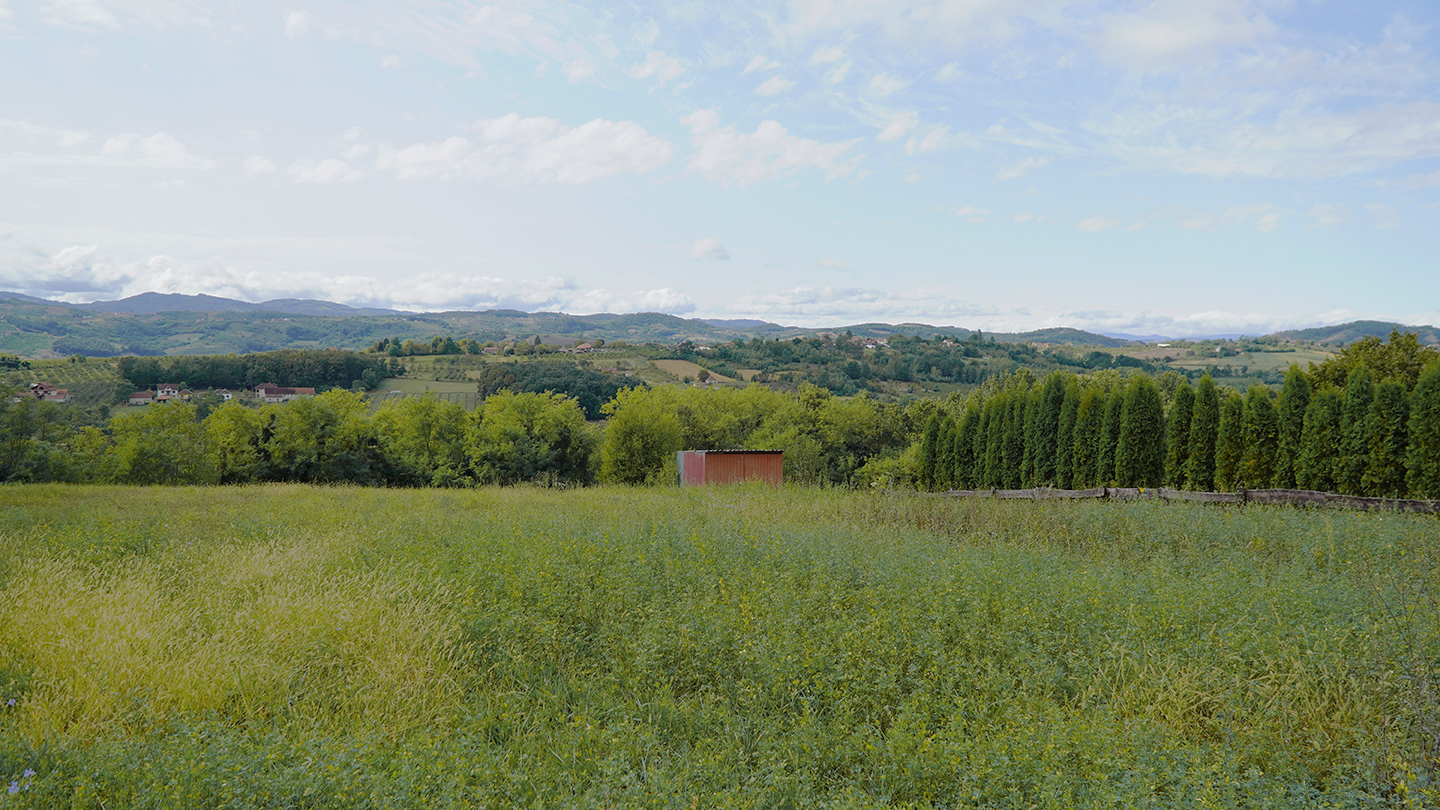
Gornja Gorevnica, Serbia. Courtesy of WCSCD.
Turning off the modern motorway from Belgrade to Čačak, one must traverse a thick quilt of farmlands and fields to reach Gornja Gorevnica, which sits within a dense cluster of hills dotted with boxy dwellings. During WCSCD’s ten-day intensive study in the region this past July, participants attended workshops and artistic presentations while also actively tending to the farmland, creating paths and walkways to aid access to the coming venue, and planting crops and harvested fruits. These projects provided participants with an intimate, situated knowledge of Gornja Gorevnica, emphasizing a practice of knowledge that values the empathic over the erudite—or even abolishes that distinction outright.The program’s focus on situatedness and the “felt” accentuates an ecological interdependence that is vital to ways of life focused on caring for the natural environment. This consideration underscores how the smallest of gestures, or the most mundane of cultural productions—making and sharing jam, for example—can cultivate commonality within fractured societies.
The Belgrade-based collective Škart’s 2021 film Duga resa (Fringe Infringe), which was publicly screened as part of the program’s 2023 session in the village, evidences the re-enchanting power of tangible, mundane activity. Produced over ten years, the documentary focuses on the rich histories of fringed carpets and the people who care for them within former Yugoslavia and the Balkan region. These patterned carpets are treasured as embodiments of the region’s persevering traditions and knowledge. The devotion paid to the edges of these domestic objects seems, paradoxically, equally trivial and vital. But the film embraces this duality, avoiding naive or nationalistic tropes and instead conveying how the oft-overlooked material beneath our feet can be reimagined, re-enchanted, and revalued to craft deep solidarities.
This concept of re-enchantment is central to WCSCD’s vision for its potential center in Gornja Gorevnica. The program’s first period of study focused on certain cultural practices within the village that are at risk of erasure due to pressures wrought by modern life. As part of the program, participants and WCSDC founder Ćirić worked with artist Luigi Coppola to begin a long-term structural project that would reimagine how one of these practices could be preserved through collective action. Focusing on the production and distribution of apricot jam, this endeavor would also ideally become a source of financial support for WCSDC’s center and for the people of Gornja Gorevnica. Their goal was to eventually make Kajsijevača, a type of rakija, or alcoholic fruit brandy, that is ubiquitous across the Balkan region and often made from apricots. “Moba Produkcija” (or “Moba Production”), as the project was titled, nods to longstanding practices in the region; traditionally, across the Balkans, a moba is a non-monetary pooling of labor for specific ends, such as the building of a new barn or the collection of fruit. The value of this labor is typically returned through a communal celebration, often the sharing of a meal accompanied by dancing and music.
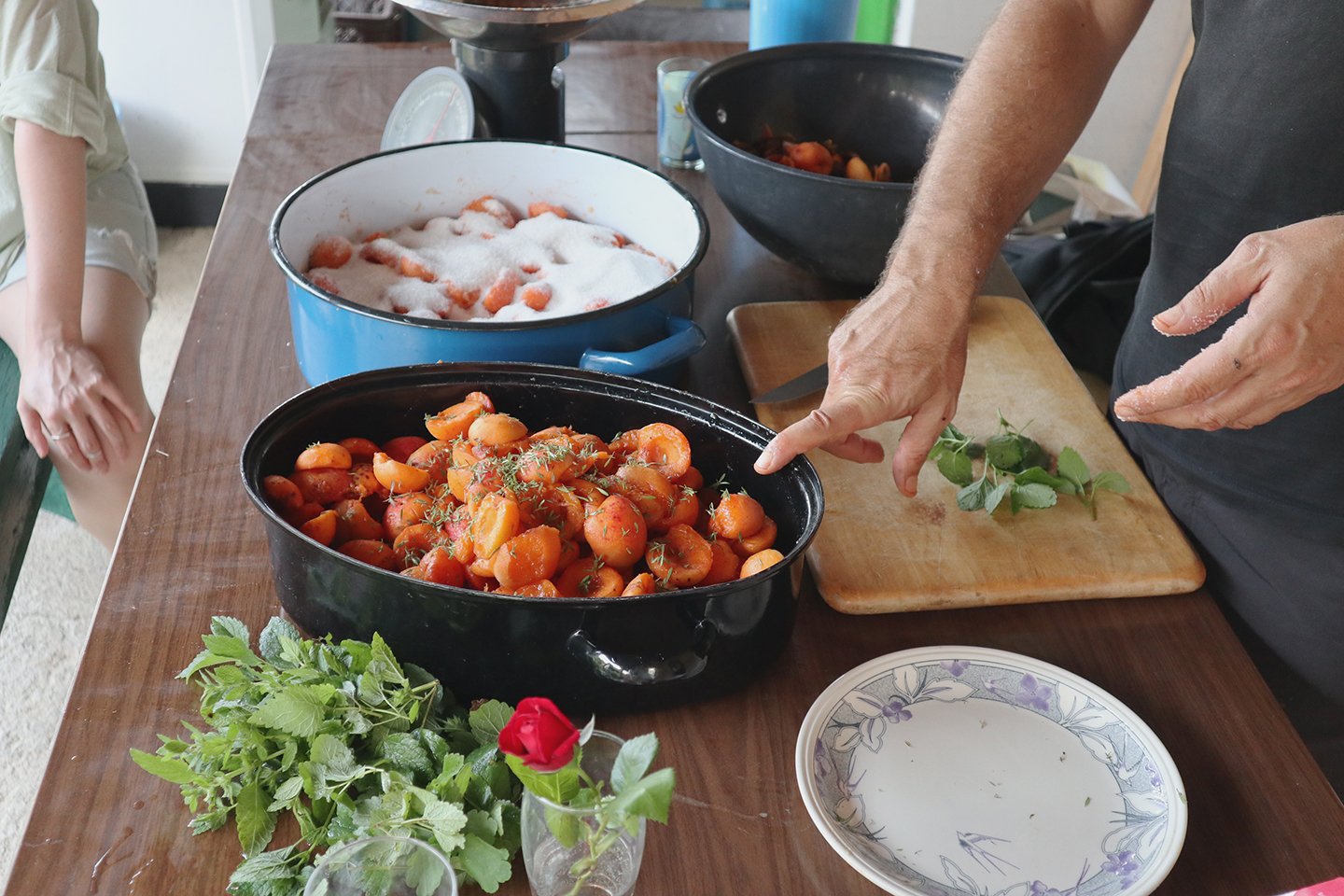
Preparing apricots to make jam for “Moba Produkcija,” in conjunction with Luigi Coppola. Courtesy of WCSCD.
Apricots are one of Gornja Gorevnica’s main agricultural outputs, and most smallholdings have an orchard with fruit that its owners sell to centralized systems of mass production or use for individual purposes.[footnote According to 2012 census, apricot production amounts to 12% of the municipality’s agricultural output, compared to 2.9% for wheat, 2.6% for maize, and a combined 9.7% for livestock products.] The circular economy envisioned by Coppola seeks to hack this market-based process by creating an alternative, community-based system in which different households, with the support of WCSCD’s center, could pool their fruit and labor resources to create a common product that would be distributed through outlets not usually accessible to individuals. In addition to reaping fiscal returns for the products made, those engaged in moba production would come together seasonally to celebrate their efforts, thereby rebuilding the social connections severed by the pressures of modern life.
This new system for community production was presented at the “public moment” in Gornja Gorevnica in late June. The results were mixed. The agricultural needs of the high summer harvest and the fast-approaching Serbian school holidays meant that the already time-pressed locals were not able to fully participate in the pooling of labor at the heart of a moba methodology. Despite this, Coppola and WCSCD managed to coordinate the creation of Moba Production’s first apricot jam, prepared on the latter’s smallholding and presented in reusable jars, featuring a label design based on a painting that Coppola had made using earth pigments sourced in the village. This joyous orange lifeblood seemed to glow as it moved from hand to hand, shared with the local people who provided the raw fruit. An important lesson in social and community-based practice, this first mobilization of Moba Production highlighted the need to move slow. It also exposed the crucial difference between a practice and a development project. There is vulnerability in a slow-growing practice, but in tending to a method in the long-term, one can become better attuned to both the community at hand and the cycles of the natural world—in other words, one can become more ecosophically minded. This also allows for flexibility in supply chains as well as the production of empathic sociality, aspects of life effaced by industrial ideologies of efficiency and progress.
The cultural center that WCSCD is developing in Gornja Gorevnica would not solely be devoted to communal production of saleable goods. As a pedagogically focused organization, its harmonious system would encourage a wider appreciation of artistic practices situated outside monocultural urban settings. Since the program’s first steps into Gornja Gorevnica, participants have been working with local people and artists to recenter the importance of personal histories and situated knowledges within creative pzroduction. WCSCD recognizes the critical value of artistic expressions that foreground one’s position within an interdependent ecology of things.
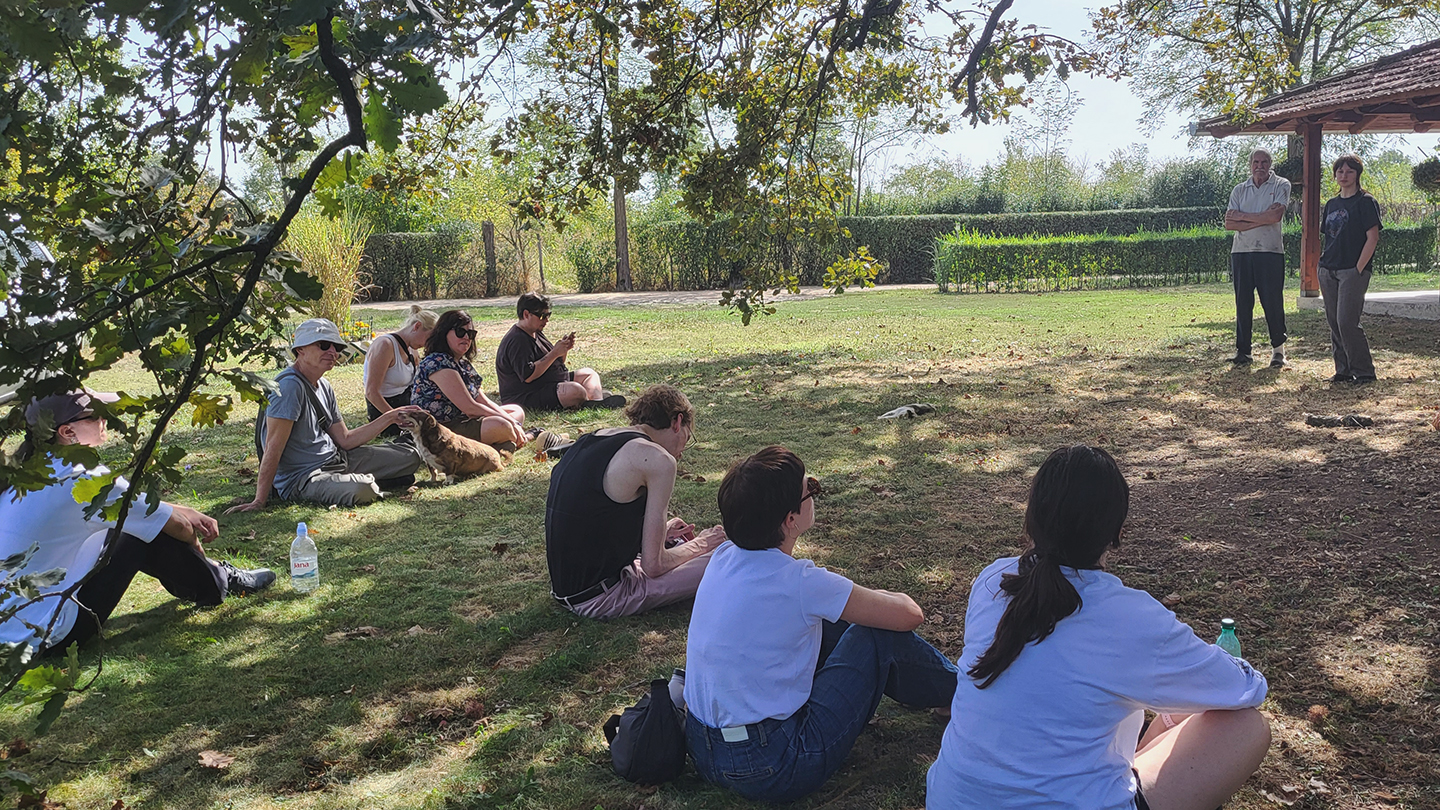
Bojana Popović bringing attendees of her performance-walk to the oldest tree in Gornja Gorevnica, Serbia, June 2024. Courtesy of WCSCD.
A performative walk led by the artist Bojana Popović during the program’s public moment exemplified this philosophy. Popović was born and raised in Gornja Gorevnica, and her personal tour of the village’s key sites of personal, communal, and historical resonance was a deeply contemplative excursion across asphalt roadways and narrow field paths alike. Her audience witnessed the young artist draft a sociographic map of Gornja Gorevnica in real time, as if walking through her memories. With its focus on life’s constituent details, Popović’s performance highlighted how seemingly insignificant aspects of one’s environment color and influence one’s daily existence. At one point in the performance, Popović spoke about a discarded blue jug that has sat in a cottage courtyard for as long as she can remember. An oblique criticality shines through this discussion of the artist’s connection to a trash-object: Popović’s performance does not abide by established hierarchies of meaning or importance, instead honoring the interdependence of all things, no matter how trivial they may seem. The artist therefore models a resistance to ideologies that prize individuation and disembodied detachment.
In an interview with Granta for the magazine’s Spring 2024 issue, the political scientist Thea Riofrancos outlines her view of materialist practice, explaining how a “coalition of organized constituencies of workers and communities” could potentially take shape.[footnote Thea Riofrancos, “The Extracted Earth,” Granta, April 25, 2024, →.]. “For me, this is what being a materialist means,” she explains. “Staying close to the ground, detecting emergent phenomena before their full efflorescence, [and] imagining political possibilities that fulfill social needs while harmonizing nature and economy.”[footnote Riofrancos, “The Extracted Earth,” Granta.]. While observing WCSCD’s activities in Gornja Gorevnica, I was struck by how much they chimed with Riofrancos’s words. Though her discussion focuses primarily on how humans can combat global extractivism at a grassroots level, its model for resistance is grounded in becoming attuned to, and consonant with, one’s surroundings. Being in tune and attentive in this way allows one to organize structures that not only support diverse ways of life but also thwart the ecosocial degradation at the heart of neocolonial modernity. WCSCD and its education program represent a new vanguard of arts organizations that are committed to creating ethical, economic, and ecologically sustainable spaces, primarily by re-enchanting what is already there.
Félix Guattari, The Three Ecologies, trans. Ian Pindar and Paul Sutton (Athlone Press, 2000), 28.
Guattari, The Three Ecologies, 52.
A term used by the Serbian writer Ivan Glišić to describe disparate settlements or porous villages which are fragmentary in form and span a large rural area.
“Open call: What Could Should Curating Do educational program 2023/2024,” What Could/Should Curating Do?, accessed June 2023, →.
According to 2012 census, apricot production amounts to 12% of the municipality’s agricultural output, compared to 2.9% for wheat, 2.6% for maize, and a combined 9.7% for livestock products.
Thea Riofrancos, “The Extracted Earth,” Granta, April 25, 2024, →.
Riofrancos, “The Extracted Earth,” Granta.
